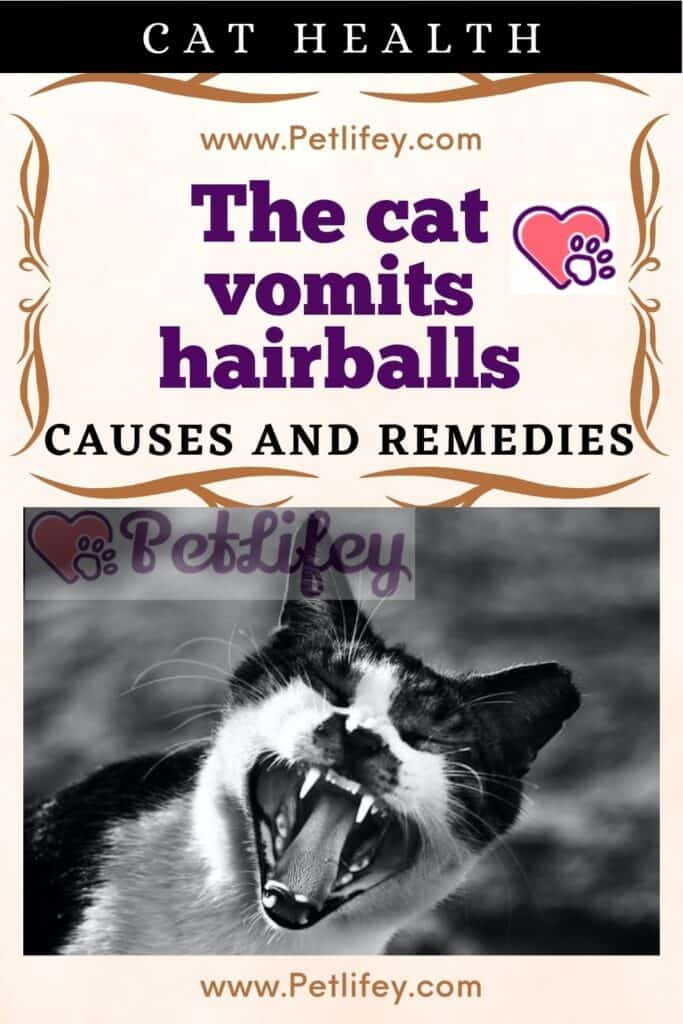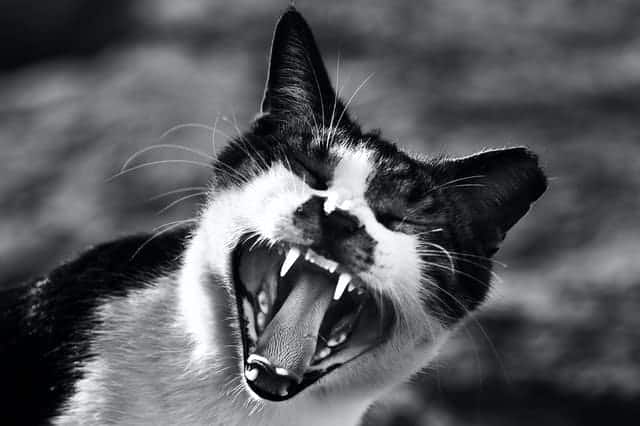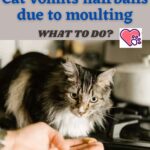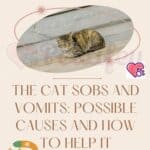
Does the cat vomit hairballs? As annoying as it is, it’s actually not a real problem: that’s why not worry if he vomits hairballs.
We know the cat as an extremely clean animal: with its tongue it always manages to take care of its hygiene. His hair is always shiny thanks to the cleaning of his tongue which removes the surface dirt. So imagining a cat having episodes of vomiting is not that easy, but unfortunately it happens. But that’s not necessarily the case. There are several methods to stimulate vomiting in the cat, precisely because it is an operation sometimes desired to make him feel better. Let’s see what are the causes why the cat vomits hairballs and what to do to make him feel better.
Hairballs: what they are
The cat is a clean animal, and this is well known. He wants his bowl to be cleaned, the litter box sanitized and to have a separate space for his rest. But at what price all this? His habit of cleaning his fur with his tongue, licking his coat with his tongue also has negative sides. How does a cat manage to pull off dead fur? Thanks to its tongue that has hooks on the surface, to which the hairs remain stuck, the surface layer of the mantle comes off but is swallowed. The hair is ‘deposited’ in the stomach and sooner or later it has to come out.
When we don’t brush our fur regularly we can’t even encourage the growth of new fleece. The cat will be forced to remove it by itself, with the tongue: these masses, bales of hair (or boluses), are swallowed by the cat and, once accumulated, come out with episodes of vomiting or create constipation and digestion problems.
Hairballs are masses of hair, joined with saliva and undigested food. They have a tubular shape (which we can see when they come out) precisely because they occupy the space between the throat and the anus of the cat. If the ball reaches too large a diameter, it will no longer pass through the intestine and will have to be ‘thrown’ out of the mouth through vomit. They can also be lethal to the cat’s health, as they can clog not only the intestines but also the cat’s respiratory system.
The cat vomits hairballs: is it bad?
The answer is probably ‘no’! The real health problem would be exactly the opposite, namely that of not being able to eliminate hairballs. It is also true that seeing our cat vomiting is not nice and seeing him suffer in expelling these hairballs is not comforting. The fleece accumulated in the stomach can create real plugs in the intestine. This prevents it from getting rid of it with a normal digestive process. The only way to expel them is to throw them up: there are products on the market that act as scrubs for the esophagus and intestines, cleaning the ducts that will lead out the hair.
During the spring and autumn seasons the cat loses its fur due to the moult: It will often happen to find tufts of fur on the sofa or on the ground. These will be the signs that will indicate the cat’s habit of licking itself more during that period. In fact, the boluses that are ingested are the hair that the cat has managed to remove from its coat. And we have our share of responsibility, because we have not done our duty as masters.
What to do to avoid hairballs
Given that the cat can get rid of excess dead hair only through vomiting, it does not mean that it is right to get it to the limit. We could avoid that the situation is created and make sure that the cat does not really have the need to vomit. Here’s what we can do to keep dead hair from settling on his coat.
- Brush it regularly: this would favor the regrowth of new hair and avoid the cat’s ingestion of the hair. We can use brushes or wearing gloves that remove the surface layer of the feline coat.
- Give him specific food: Some foods, which have a rough texture and high in fiber, help the intestine to clean itself and more easily eliminate hairballs from the rectum.
- Catnip: this precious plant stimulates digestion in the feline, cleans the stomach and esophagus, as well as giving a pleasant sensation of freshness in the mouth.
We are careful not to feed them foods that are too rich in fiber: they can cause episodes of diarrhea, bloating and intestinal gas. Foods rich in protein promote the growth of a healthier and more resistant coat. Fatty acids ( or EFAs) also play their part in helping the digestive system.
When to be alarmed if your cat vomits hairballs

We could say that it is completely natural for the cat to get rid of these masses of hair accumulated in its digestive system, but when is it necessary to contact a veterinarian? In fact, there are some signs that should make us alarm, for example when the cat:
- cannot defecate,
- often complains,
- cries,
- suffer from lethargy,
- suffers from loss of appetite and does not drink,
- has a swollen abdomen and does not like to be touched,
- retching is frequent.
Vomiting episodes certainly have negative sides: the acid that remains in the stomach can lead to pathologies such as ulcers, the erosion of the lining around the stomach. Furthermore, these episodes can bring with them other problems, such as: dehydration, rapid heartbeat, altered blood pressure, convulsions etc.






